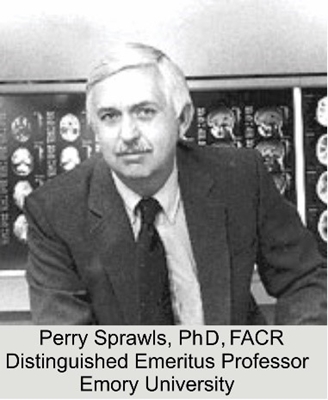by Perry Sprawls, PhD, FACR
Preserving Our History and Heritage
 The many stages in the human life cycle, beginning with infancy and into the senior years, are defined by various influences. Each stage is characterized by evolving capabilities — both physical and mental — including education, developing relationships, personal achievements, interests and motivations, as well as career and professional pursuits.
The many stages in the human life cycle, beginning with infancy and into the senior years, are defined by various influences. Each stage is characterized by evolving capabilities — both physical and mental — including education, developing relationships, personal achievements, interests and motivations, as well as career and professional pursuits.Each phase also provides unique opportunities associated with particular abilities and the resources available at that time. In our early years, this could include participation in active team sports and scholastic activities in schools and universities.
The senior stage at which we find ourselves is very rich with special and unique opportunities, a lifetime of experiences, collected objects (documents and images) and our memories. Most importantly, we feel a sense of urgency to safeguard our personal and professional history and heritage. Taking action now is a pressing concern because, if we don’t, it could be lost forever.
I am happy to share with you several specific examples illustrating how you can preserve your history and heritage for future generations. The most obvious way is through official records such as census, marriage and death certificates, as well as news articles and obituaries.
While these records are of interest to genealogists, they do not provide the true and full-life stories of family members to be remembered by future generations. To help create a permanent record of your family heritage, I offer my detailed online guide: Securing and Sharing Your Family Heritage: How to Do It and Links to Resources.
In my role as historian of the Emory Department of Radiology and Imaging Sciences, my continuing effort is to develop and publish biographies of all our emeritus faculty, including the life stories (bibliographies) of individuals over the years and the significant history of radiology departments and clinics.
Another way we preserve and connect with our past is through traditional brick and mortar museums. While vital to the conservation and display of human history, these structures present significant challenges, including limited capabilities to house and effectively display items of historic value (such as in the field of radiology) as well as inaccessibility to most of society due to geographic locations and limited resources.
Happily, modern technology provides solutions, such as virtual museums using web-based images to represent our history. I am using my years of experience in imaging the human body to now produce and display images of historical value. One of my major projects is providing virtual museums for my hometown community, Barnwell County, SC. This project includes both stand-alone virtual museums as well as virtual components for several of the physical community museums. The American Association of Physicists in Medicine provided the first virtual museum for the field of radiology, which includes an exhibit based on my years of experience in the development of mammography.
In summary, although we each have different backgrounds, experiences, interests and life objectives, a common element is the opportunity to use our time and memories, along with modern technology, to preserve and share our individual heritage and collective histories as a contribution to future generations.